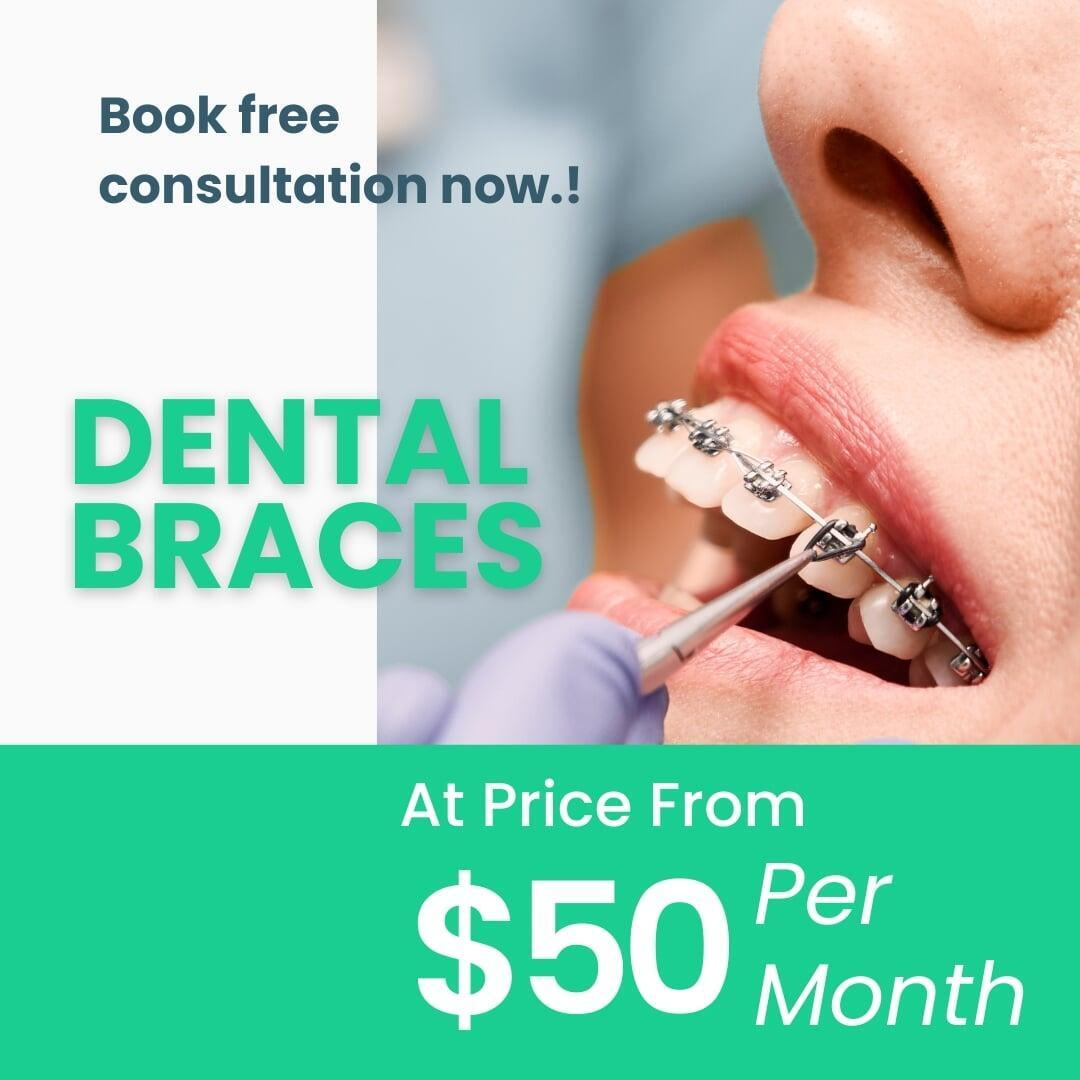We offer convenient financing options for your dental treatment, with Monthly Payments starting at just $50 USD. Don't miss out on this opportunity to prioritize your dental health.

Benefits of Dental Braces
Dental braces, commonly known as "braces" in English, are used to correct dental alignment and bite problems. These orthodontic devices are used in dentistry with the purpose of improving oral health and a person's aesthetics. Here, I detail their main purposes:
- Correction of Alignment Problems: One of the most prominent benefits of dental braces is their ability to correct dental alignment problems. This includes crooked, crowded, or misaligned teeth. Correcting these issues not only improves the appearance of the smile but can also prevent long-term dental complications such as cavities and periodontal disease.
- Improved Bite: Dental braces are also used to correct bite problems, such as crossbite, open bite, and overbite. These problems can cause discomfort while eating and speaking, but with the help of braces, a proper bite can be achieved, improving oral function and overall quality of life.
- Enhanced Dental Aesthetics: In addition to their functional benefits, dental braces can significantly enhance dental aesthetics. By aligning the teeth and correcting bite problems, a more attractive and symmetrical smile is achieved, boosting the confidence and self-esteem of those who use them.
- Prevention of Future Dental Problems: Correcting alignment and bite problems with dental braces not only provides immediate benefits but can also prevent serious dental issues in the future. Having a proper bite and aligned teeth reduces the risk of cavities, periodontal disease, and excessive dental wear.
New Patient Form
The Process of Placing Dental Braces
The placement of dental braces is a carefully planned and executed procedure performed by an orthodontist, a specialist in dental orthodontics. The process generally consists of the following stages:
- Initial Evaluation: The first step is a thorough evaluation of the patient's mouth. The orthodontist conducts a clinical examination, takes X-rays, and makes impressions of the teeth to obtain an accurate record of the patient's dental situation.
- Treatment Plan: Based on the initial evaluation, the orthodontist creates a personalized treatment plan. This plan includes the type of braces to be used (metal, ceramic, invisible, etc.), the estimated duration of treatment, and any other necessary procedures.
- Placement of Brackets: Once the treatment plan has been designed, the placement of dental brackets begins. This process involves cleaning and drying the teeth, applying a special adhesive, and placing each bracket in its predetermined position on the surface of the teeth.
- Wire Connection: After the brackets are placed, a metal wire is inserted through the brackets. This wire is adjusted to apply the necessary pressure on the teeth and guide their movement over time.
- Regular Adjustments: During the course of treatment, the patient must visit the orthodontist regularly for adjustments to the brackets and wires. These adjustments are essential to ensure that the teeth gradually move into their desired position.
- Removal of Brackets: Once the desired dental alignment has been achieved, and bite problems have been corrected, the brackets and wires are removed. This process is usually completed with a dental cleaning and impressions for making a retainer.
- Use of Retainers: After the removal of the braces, a retainer is provided to the patient. Retainers help maintain the new position of the teeth and prevent them from becoming misaligned again.
Type of dental braces
Dental braces are orthodontic devices used to correct misaligned teeth and bite issues. There are several types of dental braces available
Determining the appropriate type of braces for your specific case is a decision that should be made by an orthodontist or orthodontic specialist after a comprehensive evaluation of your dental situation. Here are some steps you can follow to determine the right type of braces for you:
- Schedule a consultation with an orthodontist
- Discuss your goals and concerns
- Consider your personal preferences
- Listen to the orthodontist's recommendations
- Inquire about treatment time
- Evaluate comfort
- Make an informed decision
- Traditional Metal Braces: These are the most common and recognizable type of braces. They consist of metal brackets attached to the teeth, connected by wires. Modern metal braces are smaller and more comfortable than in the past.
- Ceramic Braces: Ceramic braces are similar to traditional metal braces but use tooth-colored or clear brackets and wires. They are less noticeable and are often chosen for cosmetic reasons.
- Palatal Expanders:Widens the upper jaw to create more space for crowded teeth. Often used in children with narrow palates. Typically used before braces.
- Temporary Anchorage Devices (TADs): Mini-implants placed in the jawbone to anchor braces. Used to address complex orthodontic cases. May reduce the need for headgear or surgery.
- Clear Aligners (INVISALING): Clear aligners, such as Invisalign, are a popular choice for adults and teenagers. These are a series of custom-made clear plastic trays that gradually shift the teeth into the desired position. They are removable and nearly invisible.
- Self-Ligating Braces: These braces do not require elastic bands or ties to hold the wires in place. They use a specialized clip mechanism that can reduce friction and discomfort. Damon braces are an example of self-ligating braces.
- Retainers: While not braces per se, retainers are often used after braces treatment to maintain the corrected position of the teeth. They can be removable or fixed behind the teeth.
 Skip to main content
Skip to main content
